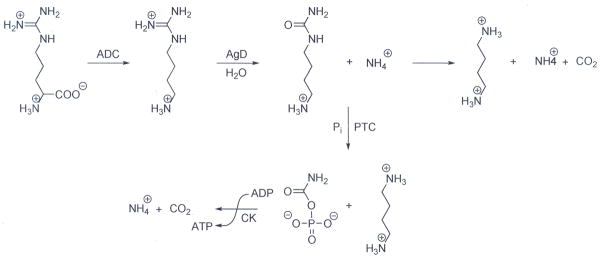Fig. 1.
Bacterial agmatine degradation pathways. In bacteria, arginine is converted to agmatine via the actions of Arginine Decarboxylases (ADC). Agmatine is then hydrolyzed to form N-carbamoyl putrescine (NCP) by agmatine deiminase (AgD). In bacteria encoding an Agmatine Deiminase System, NCP is then converted into putrescine and carbamoylphosphate by putrescine transcarbamoylase (PTC). Carbamate kinase (CK) then catalyzes the transfer of the phosphate moiety in carbamoylphosphate to ADP, forming ATP, as well as ammonia and CO2. Other pathogenic bacteria encode an alternate non-ATP forming agmatine degradation pathway that involves the conversion of NCP into putrescine, ammonia, and CO2 via the actions of an N-carbamoylputrescine amidohydrolase (CPA).

